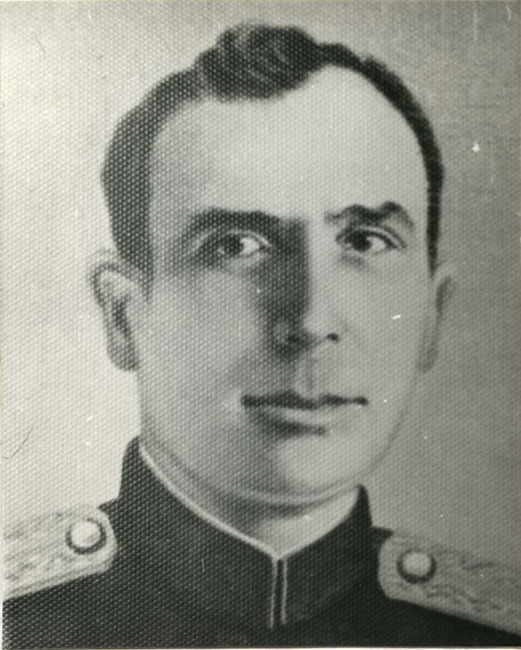Iosif Bumagin was born in 1907 in Vitebsk Province, Belorussia into a poor family. After finishing a 7-year school in Vitebsk, Yosif became a lathe-operator working with metals. Between 1929 and 1933 he served in the Red Army and during this period he became a member of the Communist Party. In 1937 Bumagin moved with his family to the city of Birobidzhan, administrative center of the newly established Jewish Autonomous Region (JAR), where he worked as a foreman in the forge workshop of an agricultural-machinery construction factory.
Shortly before the outbreak of the war between USSR and Nazi Germany on June 22, 1941, Bumagin was drafted for the second time into the Red Army. After graduating from the Military Infantry School in Vladivostok, he served in the Soviet Far East. In April 1945, following his repeated requests, Lieutenant Iosif Bumagin was sent to the Western Front.
As part of the Lower Silesian Offensive, from February 13 until May 6, 1945, Soviet troops besieged the heavily fortified German city of Breslau (Wrocław). During the battle for the city the Germans put up heavy resistance and fierce street to street fighting took place. As commander of a machine-gun platoon Iosif Bumagin was assigned to capture one section of Breslau. On April 24 Bumagin's machine-gunners engaged in street-to-street fighting but encountered heavy enemy fire and had many casualties. Further advancement of their infantry regiment was halted by the fire of two German machine-guns located in the concrete cellar of a demolished building. Bumagin reached the cellar and managed to silence one machine-gun with his last hand grenade, but the other continued to fire. Then he threw his body against the embrasure and succeeded in silencing the second machine-gun. This enabled the regiment to move forward. Iosif Bumagin was buried along with other Soviet officers in Wrocław.
On April 27, 1945 the Birobidzhanian Yiddish newspaper Birobidzhaner shtern published a brief notice about Iosif Bumagin's heroic deed. On June 27, 1945, for this feat Lieutenant Iosif Bumagin was posthumously awarded the title of Hero of the Soviet Union. Between 1946 and 1948 four articles about him were published in the Jewish Anti-Fascist Committee (JAC) Yiddish newspaper Eynikayt. The earliest one, from May 1, 1946, "Iosif Bumagin, Hero of the Soviet Union" by D. Serebrianikov, who served with Iosif Bumagin during the battle for Breslau, described Bumagin's heroism during the battle for the city. At the very beginning of his article Serebrianikov emphasized Iosif Bumagin's Jewishness, stating that he was "a Jewish Alexander Matrosov," an infantry soldier awarded the title of Hero of the Soviet Union for using his body to silence a German pillbox in 1943. Matrosov had become a Soviet symbol of heroism and self-sacrifice. Serebrianikov ended his article by saying that Bumagin's feat was, among other things, revenge for "the long-suffering Jewish people," thus alluding to the Nazis' murder of Jews during the war.
After the war, at the forge of the factory in Birobidzhan a memorial plaque was installed, indicating that Bumagin, a Hero of the Soviet Union, had worked there. In 1947-1948 two Yiddish epic poems about Iosif Bumagin were written by Chaim Maltinski and Aron Vergelis and published in Birobidzhan and Moscow. In 1966 a monument was dedicated to Bumagin in a park near the factory. However, in 1975 this was replaced by a memorial complex where the name of Bumagin was engraved along with those of another 1,200 soldiers from the JAR who fell during the war. Streets were named after Iosif Bumagin in the cities of Vitebsk and Birobidzhan.







